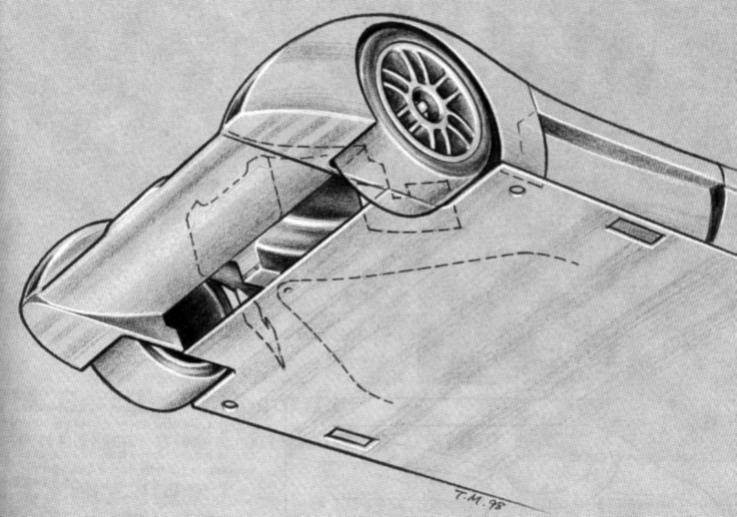Edit: sorry for all the picture quotes! I'll come back and pull them
Quote:
Originally Posted by freebeard

Well they show you why, it's in the colors. Green is ambient (either pressure or velocity). Red is getting ' mangled' by body below the stagnation point. Blue is the low pressure created by the receding after-body.
Looking at the design itself, they've placed Air-Tab™ type vortex generators at the sills oriented in the cross-wind direction. I'm not sure if they act on the upwind or leeward side.
Then you have strakes. I haven't seen much on them
Mercedes seem to use them to moderate the red [pressure/velocity] on the sides but let a plume through down the center that results in an ambient condition at the center bottom of the wake.
Notice that in the wake the blue lines are evenly spaced, but in the green area they are bunched up.
Crafty. The Ferrari solution doesn't look like it would do much. Compare to this:

Edit: I looked at the Ferrari article. There are two new examples of Ferrari using external ducts on the rear.  |
Cross wind aerodynamics is one thing I have zero understanding of, but would like to delve into. It is interesting they would have a higher pressure in the center than the flanks of the floorpan.
Ferrari seems to be doing the opposite with their strakes. I like the strake because it's simple. Even if vortices are weak, they're diverting air away from the center and towards the outside of the floorpan, making the center the lowest pressure region of the pan and if the strakes work as intended, keeping flow moving with vortices
I LOVE their rear wing design. Its very well integrated and elegant